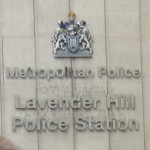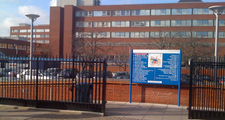The Regeneration and Community Safety OSC meeting on Monday spent a lot of time discussing the proposed priorities for the Partnership Strategy Group for the forthcoming year. And it was quite right to do this, these are going to be the priorities that the police and other partners have in their work for the next year. I’ll be putting some stuff on this site about them in due course.
However, it did mean that other items on the agenda perhaps didn’t get the attention they deserved, partly because of the time, and partly because council meetings often focus on where there is disagreement between partners – most of these items were good news.
In an attempt to redress that I’m just going to briefly outline some of them (and link to the associated council report).
Junior and Safer Citizen Schemes
Council report
Junior Citizen schemes are commonplace now and few council’s don’t run a scheme of some type. However Wandsworth was one of the first, and this year it celebrated its 20th year.
The scheme involves exposing 10 year olds (there are 2,000 places a year) to a variety of scenarios to teach them about safety. The scenarios are delivered by a range of partners and not just the council, so children meet fire fighters, police and ambulance staff as well as council officers.
It has recently been accredited by the Royal Society for the Prevention of Accidents for its quality and in November the Safer Citizen scheme (which focuses on young disabled people) won a Safer Community Award from the Suzy Lamplugh Trust.
Neighbourhood Watch Strategy
Council report
It isn’t a very sexy title, but I think this is a very exciting project. Wandsworth has long been a strong supporter of Neighbourhood Watch (NW), the council is something of a rarity since in most places NW is run by the police rather than the council. Here, it has meant a very strong NW community has developed and can get support from a dedicated group of council officers.
However, we did perhaps concentrate on quantity rather than quality. And this makes sure this isn’t the case in the future. For a start it sets out what everyone can expect from a NW scheme, so co-ordinators know what they have to do, but also what support they can expect from the council and their local Safer Neighbourhood Team. It will also develop some of the innovative schemes like the training we offer to co-ordinators on flooding. It very much turns NW into NW+ and strengthens and consolidates NW as part of the borough’s crime fighting partnership.
‘Not in my Neighbourhood’ Week
Council report
‘Not in my Neighbourhood’ Week is a Home Office scheme the council has participated in since its creation in 2007. Wandsworth has been one of the most enthusiastic participants, organising a series of events for the week which promote and assist in crime prevention. There were too many events to list here, but they ranged from a barbecue for students (to get across specific messages about student safety) to tea parties for the elderly (to teach them how to avoid suffering distraction burglarly) and a whole load of street stalls that you probably passed in one of the town centres.
None of it would have been possible without the dedication and enthusiasm of the council’s Community Safety Division who deserve congratulating for the work they do all year round.
If you have any concerns it might be worth taking a look at the council’s Community Safety website.
 I have tended to shy away from national politics and issues in this blog, keeping it more focused on local and council issues. However, one subject that increasingly concerns me is the erosion of civil liberties in this country. Yesterday saw another little chunk of our freedoms eroded with
I have tended to shy away from national politics and issues in this blog, keeping it more focused on local and council issues. However, one subject that increasingly concerns me is the erosion of civil liberties in this country. Yesterday saw another little chunk of our freedoms eroded with  If you visit
If you visit